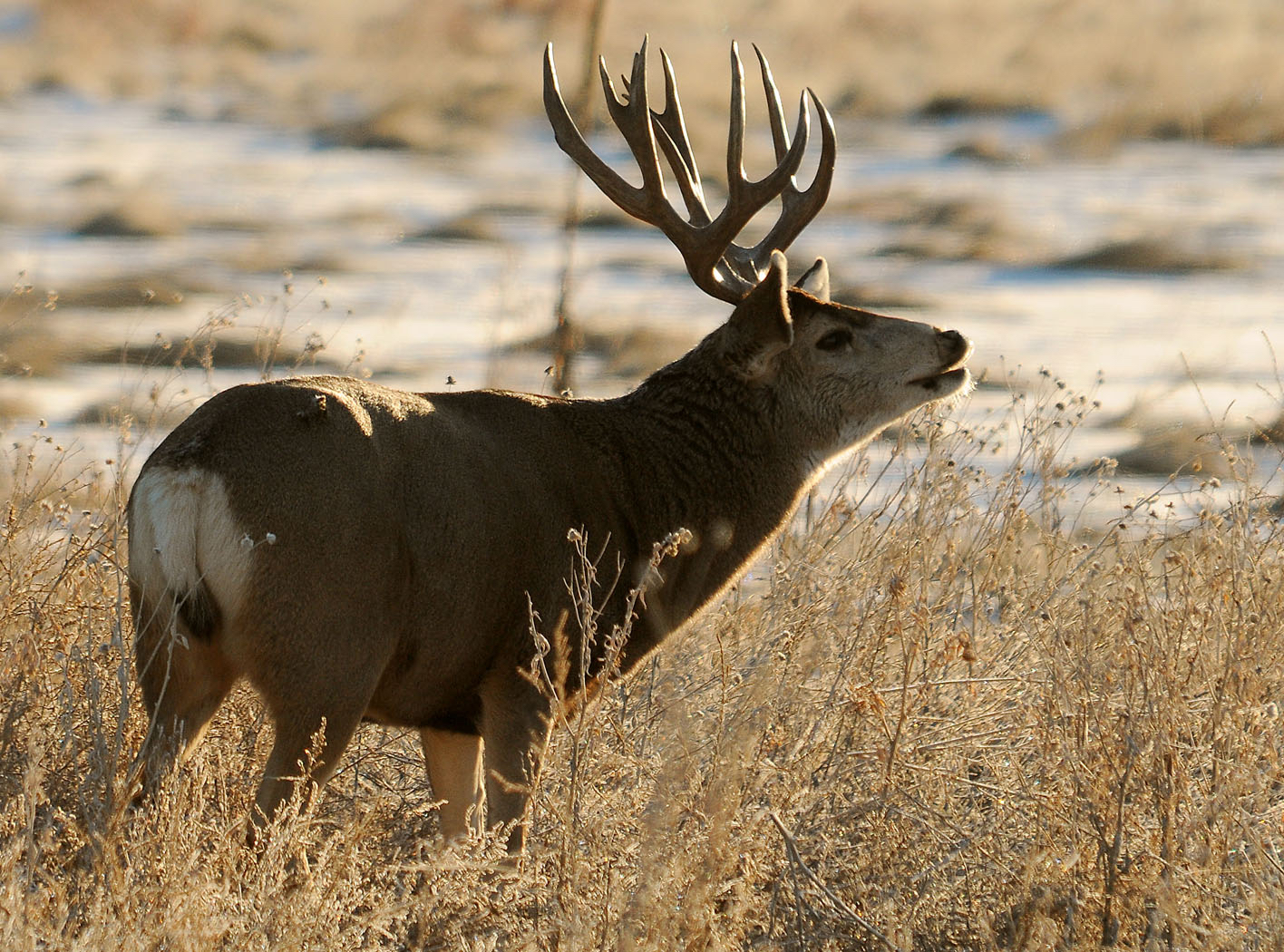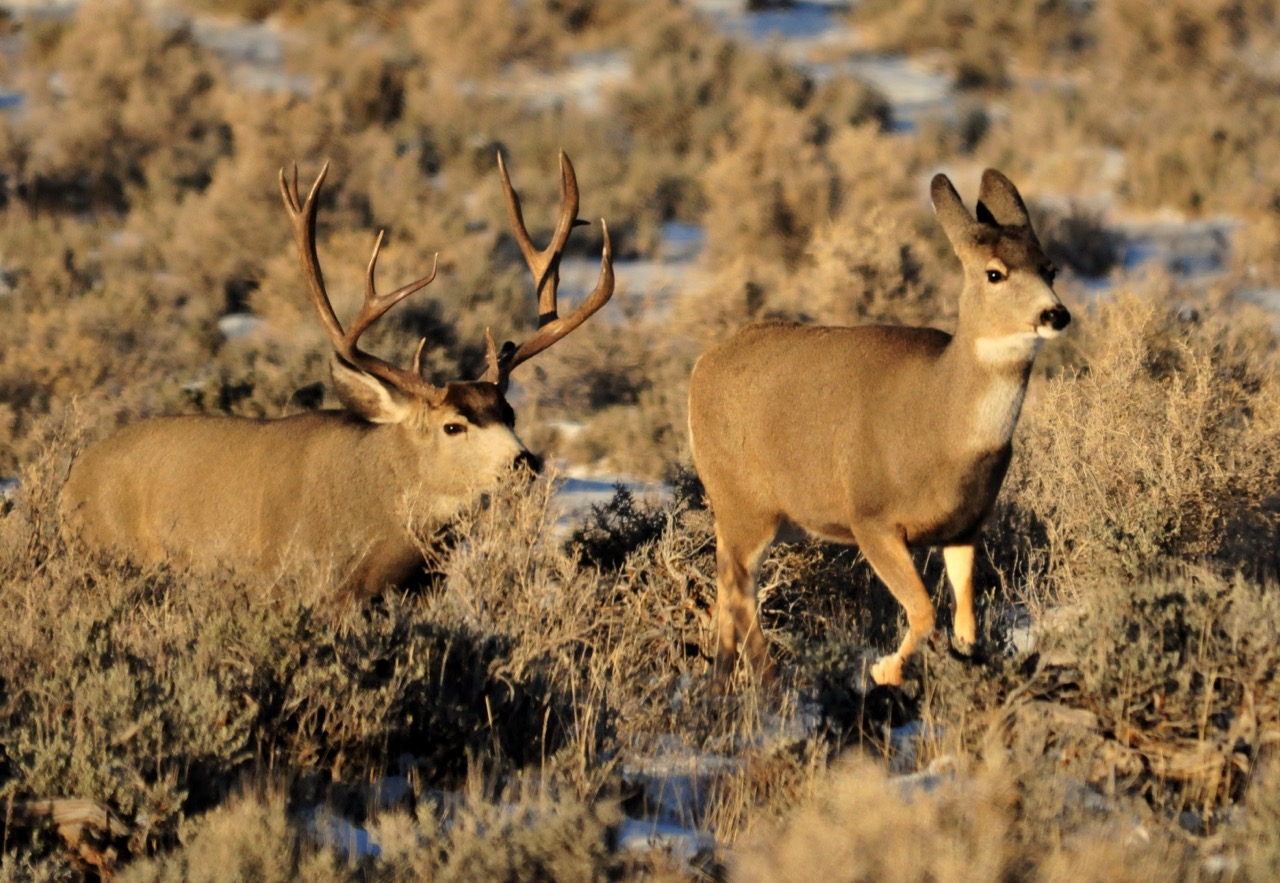Deer of the dunes
For a mulie hunt like no other, venture to the windswept landscape of Saskatchewan’s Great Sandhills
Advertisement
Drawing a coveted mule deer tag for southwest Saskatchewan’s Great Sandhills doesn’t happen very often. I love hunting the endless grandeur of these windswept dunes, however, so I apply anyway for an antlerless tag to increase my chances of a return visit. Well, luck was on my side last fall—I got drawn.
The Great Sandhills are a mix of open sand dunes and ridges carpeted in native grasses and juniper—relics of a drier time—and dotted with small bluffs of aspen, cottonwood, sagebrush, snowberry and birch. The wind rolls grains of sand up and over the dune ridges, dropping them on the leeward side. In active areas, the dunes are slowly migrating, swallowing up trees and shrubs as they go.
Advertisement
Mule deer thrive in this habitat, themselves flowing around the land’s contours like grains of sand. For a successful hunt, figuring out where they spend their day is just the start. As my adventure last fall revealed, there are several more factors that make hunting this unique region both challenging and rewarding.
[easy-tweet tweet=”@StraussOutdoors loves hunting cagey mule deer in the sandhills of southwest #Saskatchewan. Here’s why ” user=”OutdoorCanadaW” hashtags=”huntingtrip, deerhunting”]
TIMING
The morning and evening light in the Sandhills doesn’t just make for beautiful photographs—it also presents the best opportunity to spot mulies, which are most active just before dawn and again near dusk. A good strategy during these times is to find a high ridge, perch yourself quietly below the crest and watch for deer on the move. It’s a magical time, with mulies emerging from unlikely refuges as though they’d been buried in the sand; even tiny folds in the landscape can hold a dozen deer. Some mulies will travel great distances to feed in the surrounding cropland or to simply find a drink.
Advertisement
Patience is important when watching for deer in this landscape, and a good set of binos or a spotting scope is a necessity. Once you see deer, catching up to them on the move is tricky business. Sometimes it’s just better to stay put and let them come to you. You can also watch them bed down, then take your time to stalk within range.
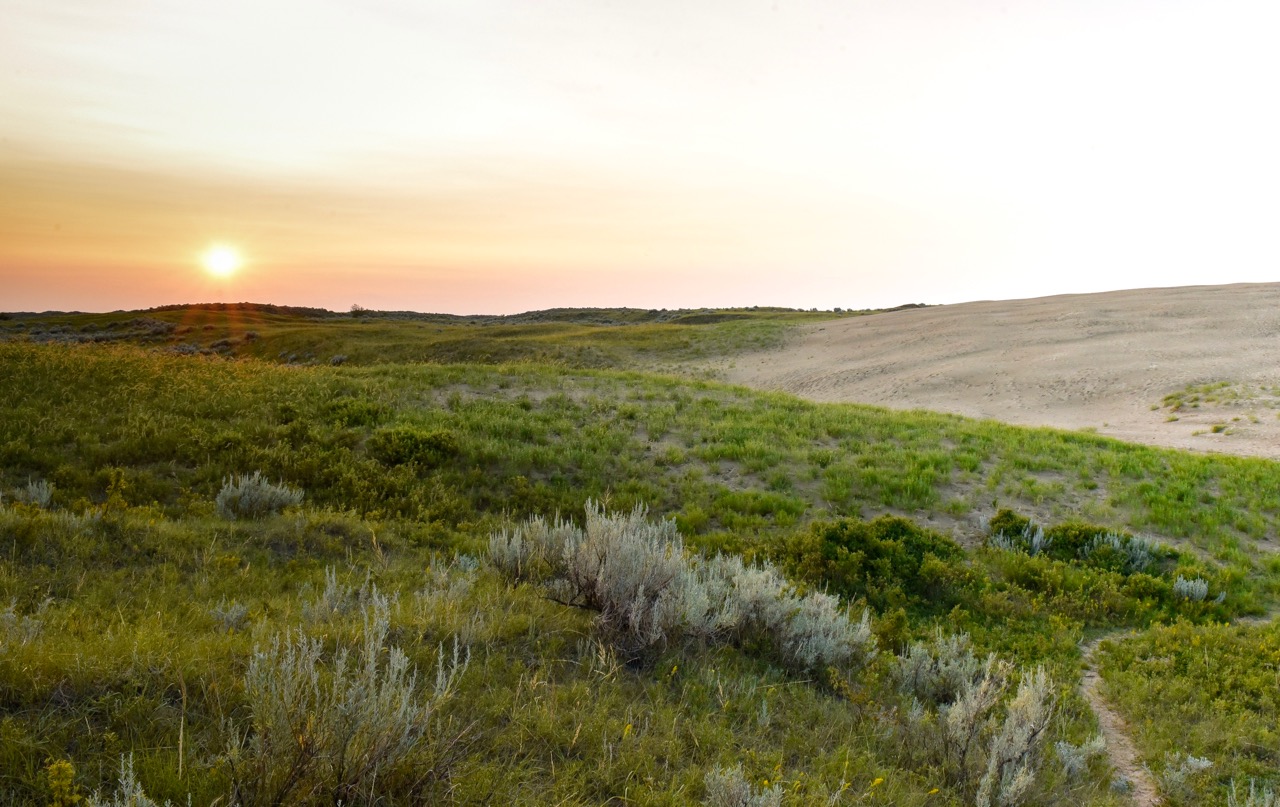
If it’s time to move, stay below the ridgeline so your silhouette doesn’t stand out against the sky. Also walk in the shadows, as mule deer are experts at detecting motion. When you’re below the ridgeline, your scent is less likely to carry, too. For me, taking those precautions led to a successful morning—I located three different herds of deer. With that, I began my stalk, making sure to head into the wind.
PRESSURE
Owing to the popularity of the Sandhills, the hunting pressure is high, especially during rifle season, when most hunters try to fill their tags. I’ve seen it countless times watching these wily deer: at the sound of a truck, they’ll dart from their beds and head over a knoll, hunkering down out of sight until the hunters drive past. With that in mind, it’s a good idea to head out on foot.
As the season wears on, hunters try different tactics to find deer. To my chagrin last season, I watched as six hunters walking in a line, much like the way you would hunt pheasants, bumped some deer from their hidey-hole—the very animals I had been stalking.
Fortunately, the small group of fawns and does was way ahead of the hunters and out of their sight. The deer then continued in my direction, disappearing behind a small, sandy ridge only 50 metres from my vantage point. I quickly crawled up to the edge of the ridge and peeked over the top; to my surprise, they had bedded down again right below me.
HAZARDS
My hasty crawl up the dune provided a painful reminder about the Sandhills: cacti, wild roses, hawthorns, cockleburs and many other pokey things abound in this harsh environment. If you’re a plant, it’s not a very good survival strategy to get eaten, so the best offence is a good defence. Avoiding the bigger thorny shrubs is easy—you just walk around them. It’s the cacti that are the real pain.
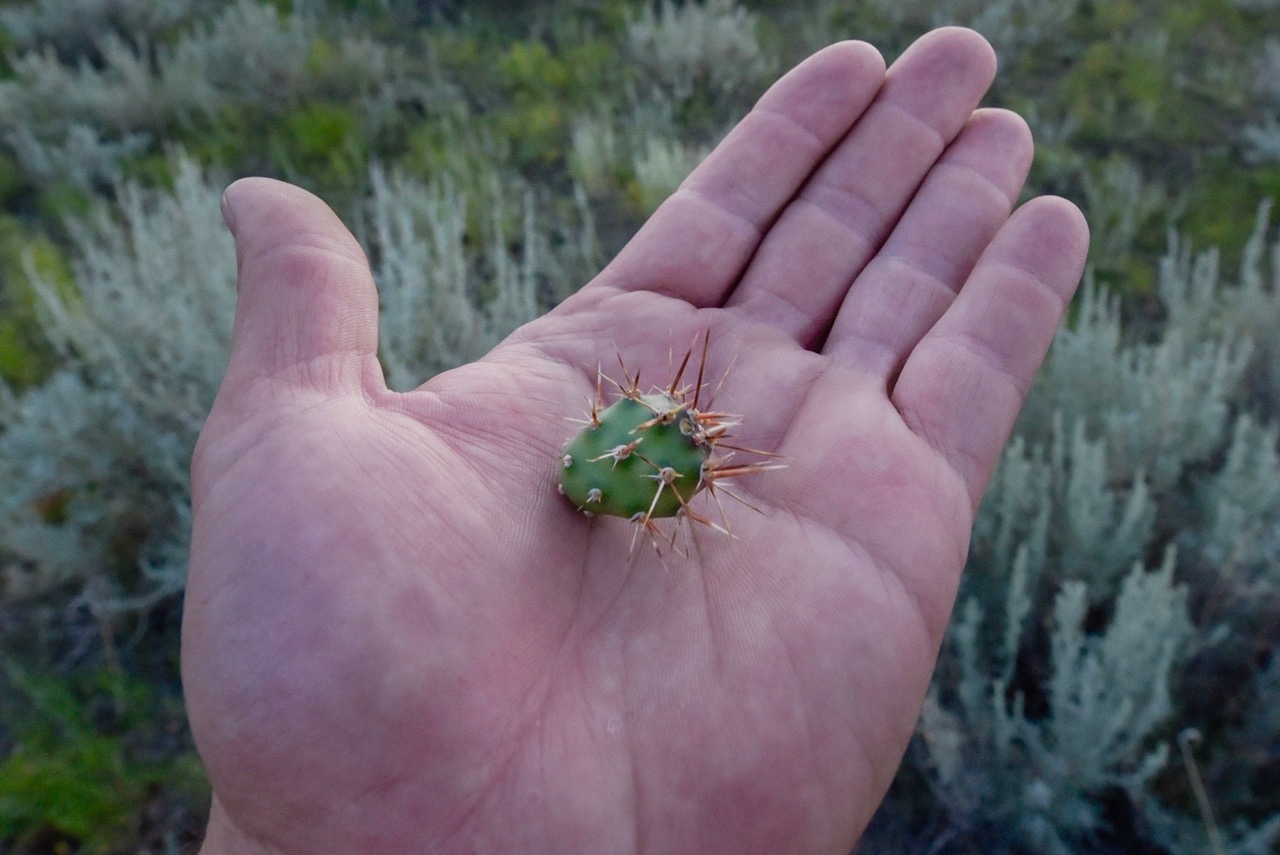
Prickly pears are tall and easy to spot, but you still need to beware their formidable spines. These long, sharp needles will glide through your hunting pants as though they were butter, then continue their advance through your flesh until you retreat. That’s when they snap off, leaving behind a souvenir of your mistake.
The brittle cactus is the true bane of the Sandhills hunter. As the name implies, parts of these cacti break off the main plant if you step on them, bump them, nudge them or just look at them the wrong way. A small, spiky ball, resembling the head of a medieval mace, will easily hook onto a passing pant leg, pack or jacket. Later, when you lean against a tree, sit down in your truck or roll up your jacket—whammo!—the spikes sink in. And because of their peculiar shape, these barbed needles dig into the skin at odd angles, making them difficult to remove. I once needed to pull out my Leatherman pliers to extract brittle cactus spikes sunk deep into my calf.
Finally, there’s the pincushion cactus. I had forgotten all about it as I focused on the deer below the ridge—until I unknowingly kneeled on one to steady my shot with my trusty bipod. It was nothing that a good set of tweezers wouldn’t fix later, though I missed a few hooked spines which spent months working their way out of my skin.
Pushing through the pain, I knew I had to get the job done before the deer caught my scent and disappeared as quickly as they had arrived. So, I picked a nice fat doe from the herd and took the shot. Success. And venison for the table.
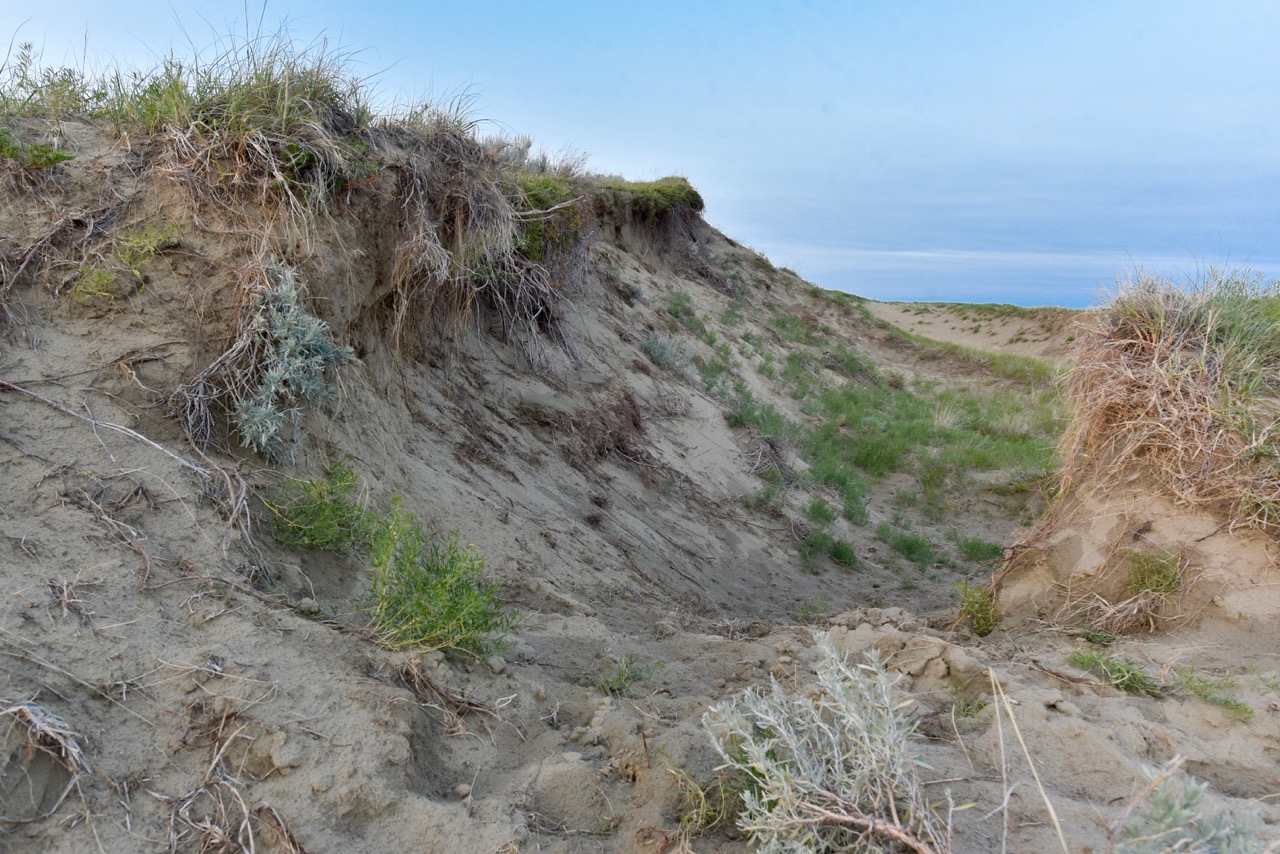
NAVIGATION
After field dressing the deer, the next challenge was finding my way back to the truck. The Great Sandhills encompass 1,900 square kilometres of rolling terrain, and after you hike a while in this wide open landscape, it all starts to look the same. But taking note of significant landmarks helps you find your way back, as does a GPS.
Legend has it that old-timers hunted the Sandhills from dawn to dusk and always managed to head straight back to their vehicles at the end of the day. While many hunting stories get better with age, I’ve come to believe these ones are true. In fact, the more I hunt these hills, the better I get at navigating them, using an old cattle trough and the road that leads to it as my main guideposts.
WEATHER
The Sandhills lie within Palliser’s Triangle, a region in southwest Saskatchewan and southeast Alberta known for its extreme temperatures. I’ve hunted mulies there in November in temperatures ranging from a bone-chilling -25°C to a relatively sweltering 25°C. Some years, there’s no snow; others, the snow is past my knees in the low spots.
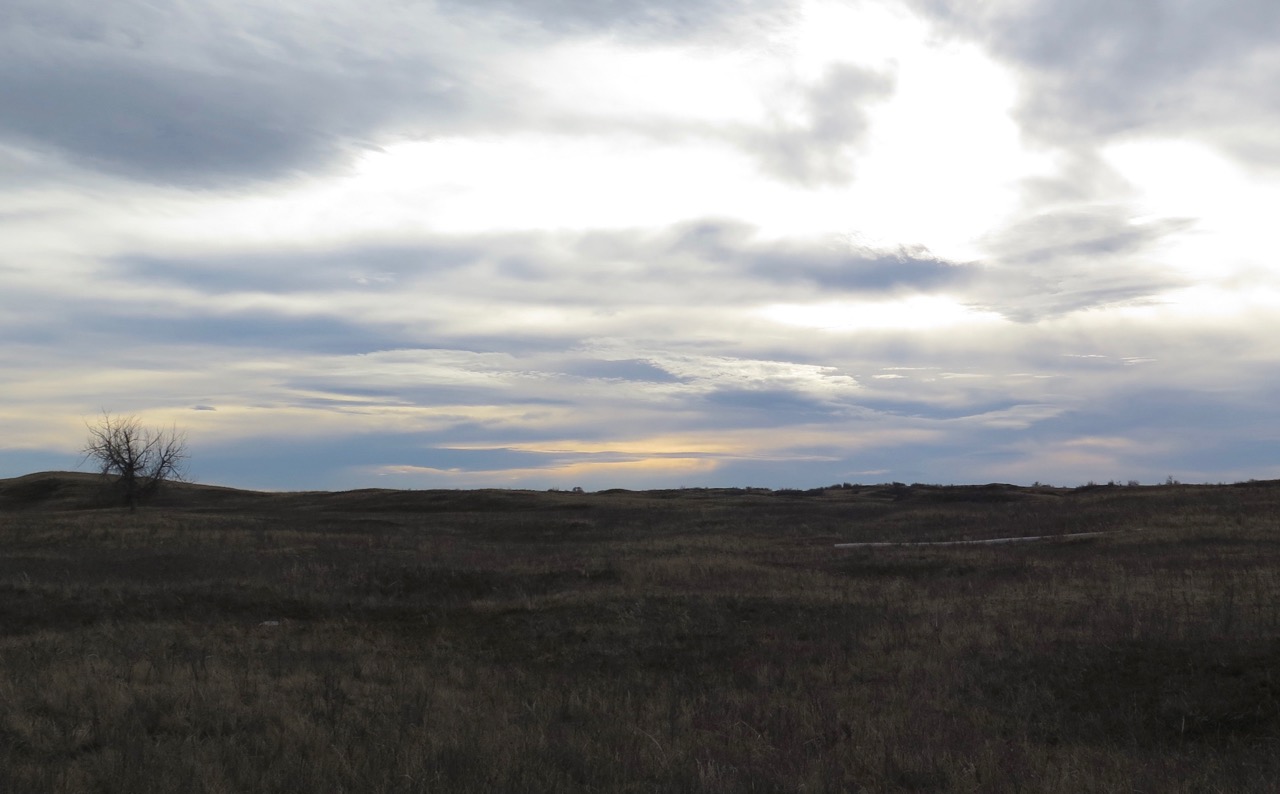
The rut and the weather drive mule deer behaviour in the fall. In the cold, the deer bed down in sunny spots, shifting as the sun moves across the sky. In hot weather, they favour heavy brush in the shade. Understanding this behaviour helps narrow down your search.
On this hunt, I was fortunate to have just enough snow to easily slide my deer across the ground. And the temperature wasn’t cold enough to make it unpleasant. Again, though, every year is different.
The Sandhills are well-managed and kept in good ecological health thanks to local ranchers, who grant permission to hunt their lands, as do grazing cooperatives. It’s a privilege to hunt this remarkable landscape, where only the shifting sand has changed over thousands of years. And every time I feast on the resulting venison, I’m grateful for the bounty it provides.
Saskatchewan contributor Lowell Strauss is a wildlife conservation scientist, hunter and a competitive target shooter.
BONUS TiP: THE SOFT PUSH
With their oversized ears, mule deer have excellent hearing. But it’s their keen eyesight and powerful sniffer that keep them safe from predators. Mule deer like to bed down on sunny or shady hillsides—depending on the air temperature—and out of the wind. With their eyes watching downwind and their noses on alert for predators upwind, they feel safe and secure. Unfortunately for them, however, bedding down on a hillside makes them easy to spot at a distance with good optics.
Still, it can sometimes be difficult to sneak in close enough for a good shot, especially when there’s a strong wind or the deer are in heavy cover. That’s when my hunting buddy and I use a strategy we dreamed up called “the soft push.”
In short, one hunter sets up where there’s a good vantage point for covering multiple escape routes. The other hunter, meanwhile, moves in a wide arc until upwind of the deer, all the while staying out of sight. Using predetermined hand signals, the upwind hunter then slowly advances toward the bedded mulies, using nothing but human scent to bump them. The trick is to get the deer up and slowly moving away, hopefully to within range of the other hunter.

